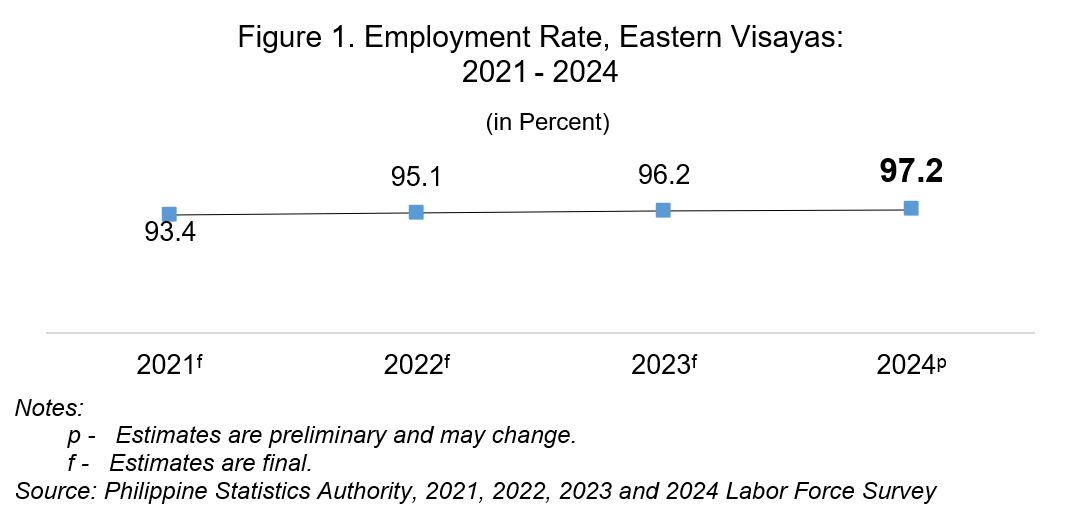
In 2024, Eastern Visayas registered a Labor Force Participation Rate (LFPR) of 63.6 percent. This was 0.2 percentage point lower than the 63.8 percent LFPR reported in 2023. The 63.6 percent LFPR corresponds to around 2.13 million persons who were in the labor force out of the 3.34 million population 15 years old and over.
There were 2.07 million employed persons out of the 2.13 million persons in the labor force of Eastern Visayas in 2024. This placed the region’s employment rate at 97.2 percent, which improved by 1.0 percentage point compared with the 96.2 percent employment rate in 2023. This was the highest employment rate since 2021 when the region posted an employment rate of 93.4 percent.
There were 59 thousand unemployed persons out of the 2.13 million population in the labor force of Eastern Visayas in 2024. This translates to an unemployment rate of 2.8 percent, which was 1.0 percentage point lower than the 3.8 percent unemployment rate in 2023 and the lowest since 2021 when the region posted 6.7 percent unemployment rate.
Underemployed population is the proportion of employed population who expresses the desire to have additional hours of work in their present job, or an additional job or to have a new job with longer working hours. Eastern Visayas recorded 16.2 percent underemployment rate in 2024. This means that there were 336 thousand underemployed persons out of the 2.07 million employed persons in 2024. The region’s underemployment rate has been fluctuating in the past four years recorded at 20.9 percent in 2021, 16.0 percent in 2022, 17.3 percent in 2023 and 16.2 percent in 2024.
SGD. WILMA A. PERANTE
Regional Director
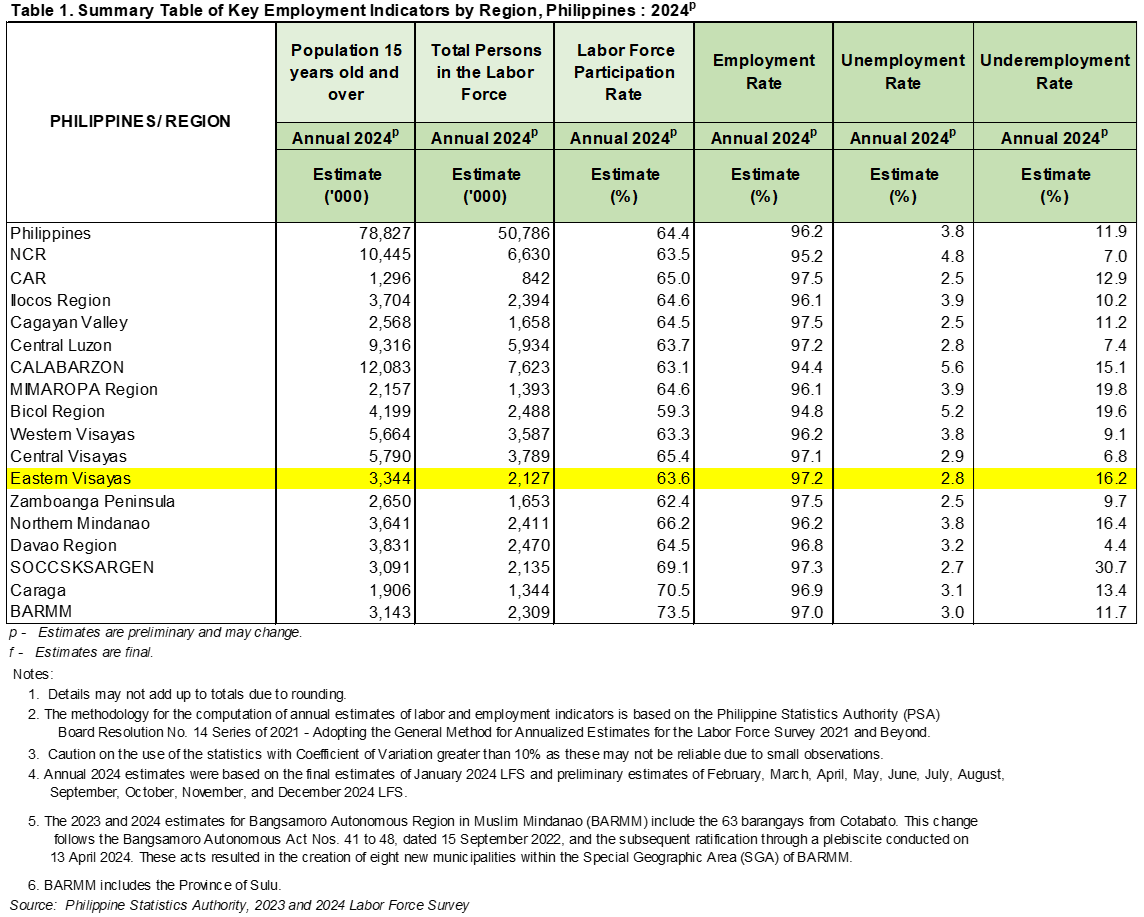

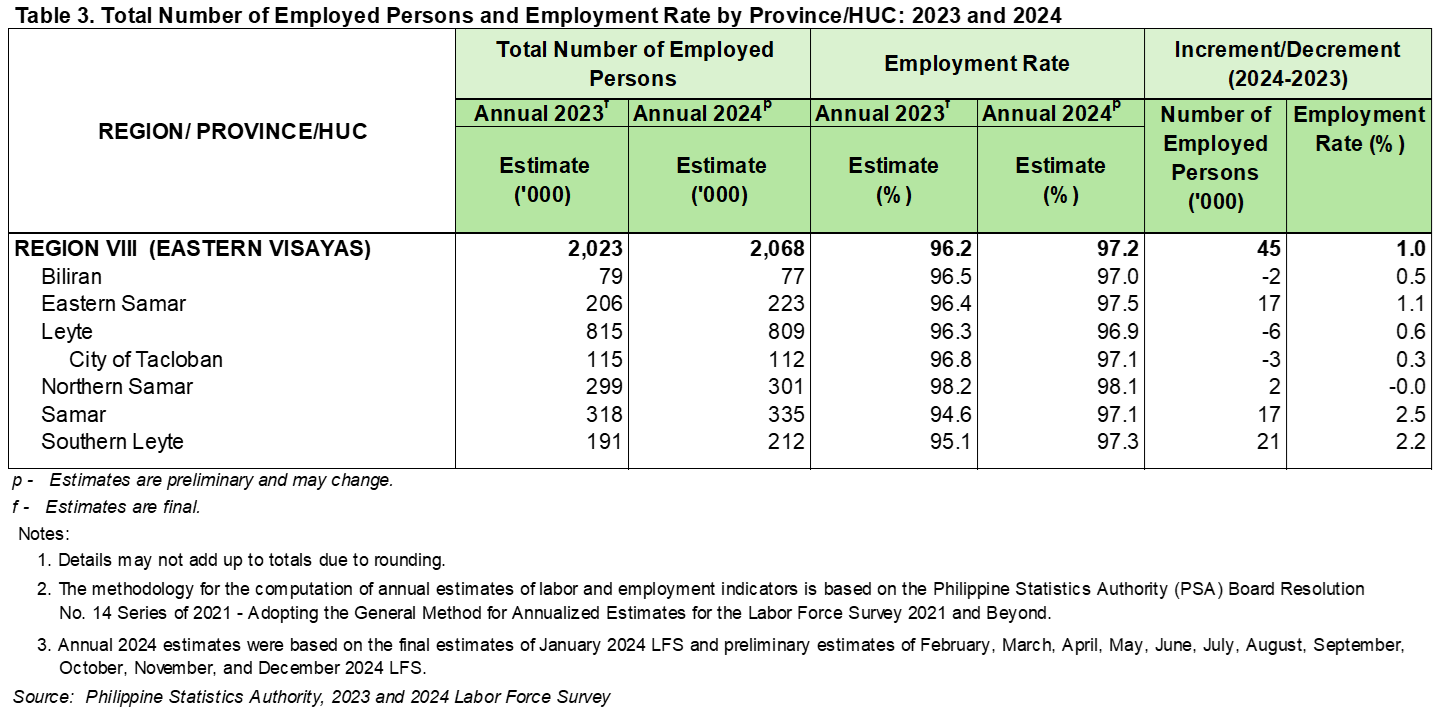
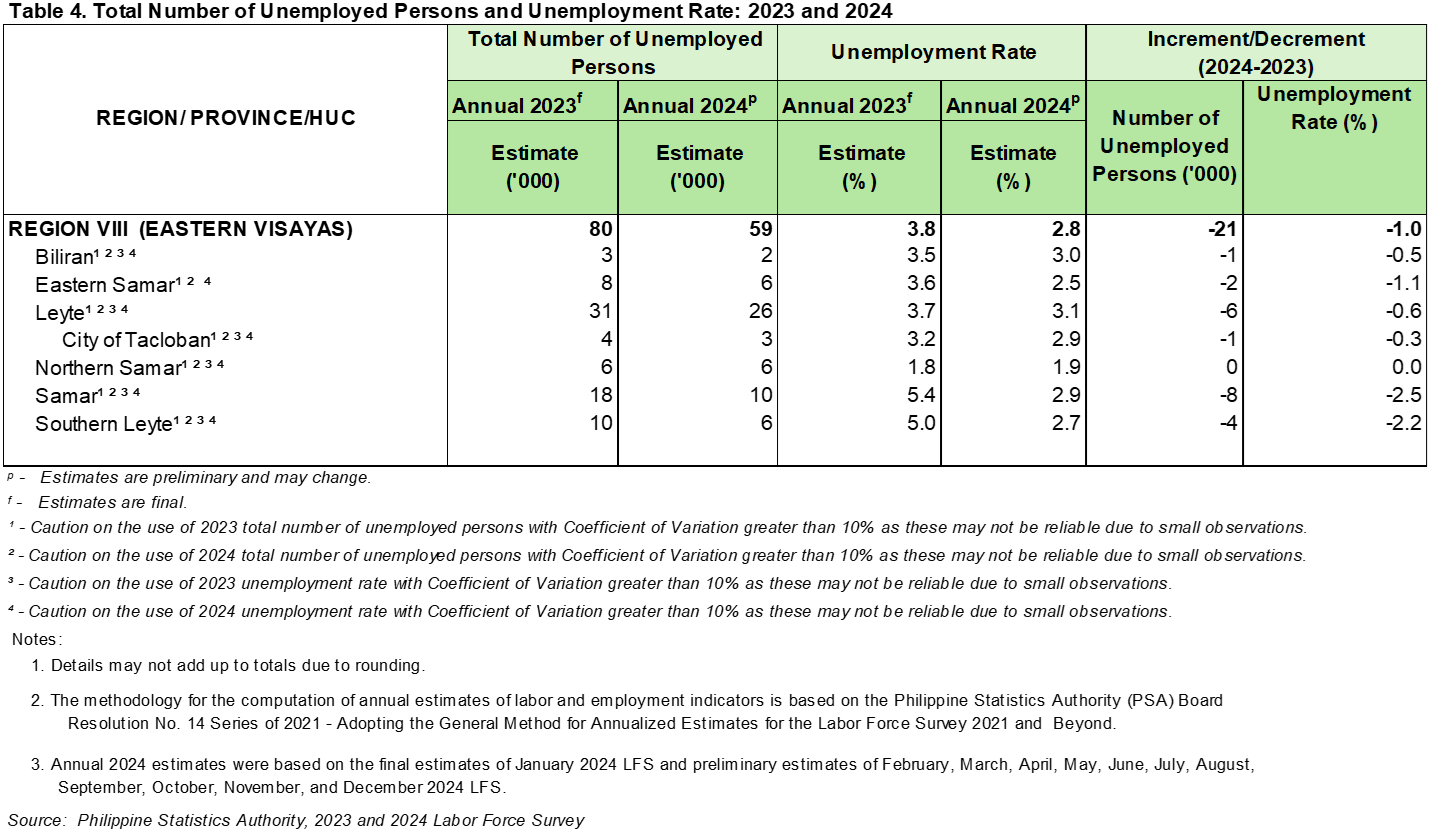
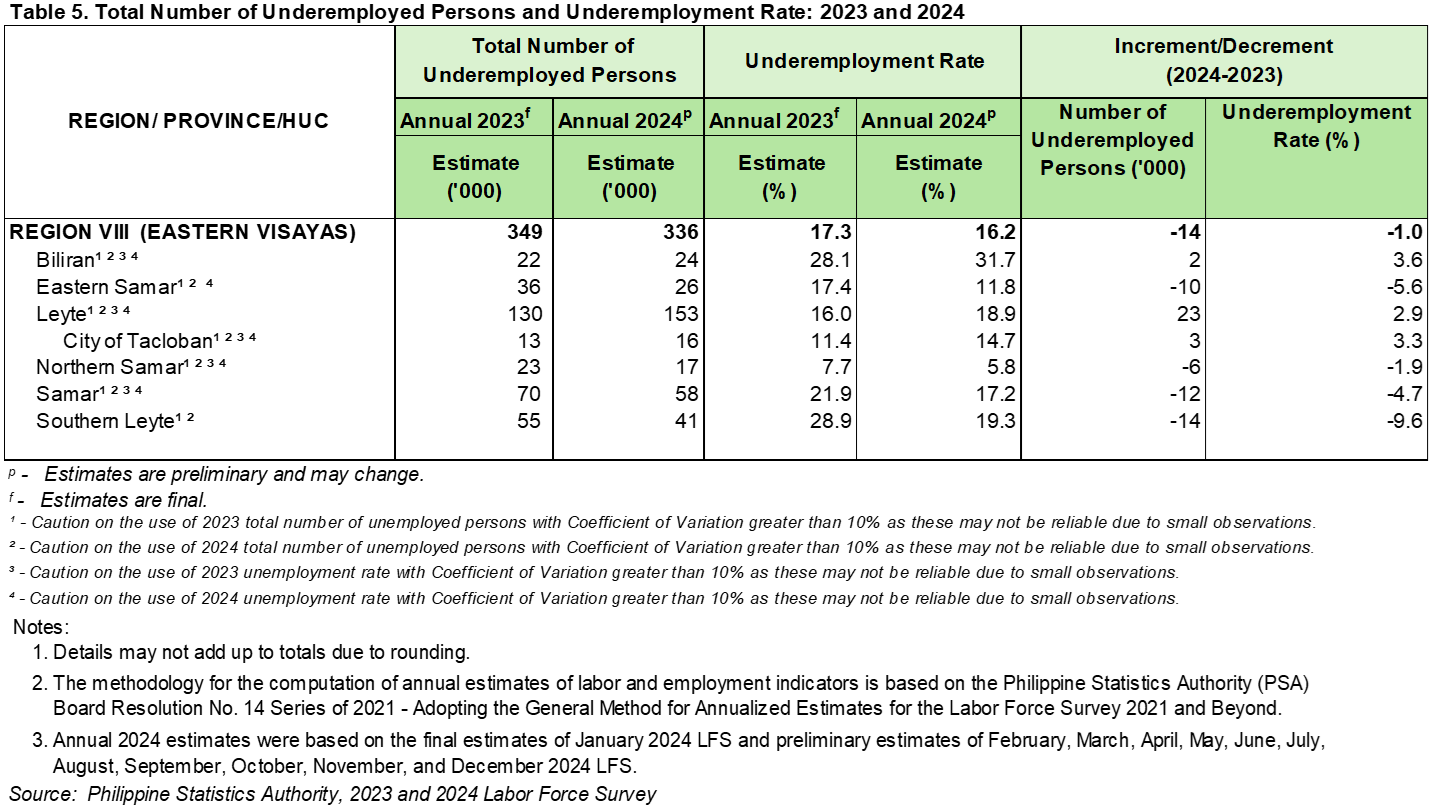
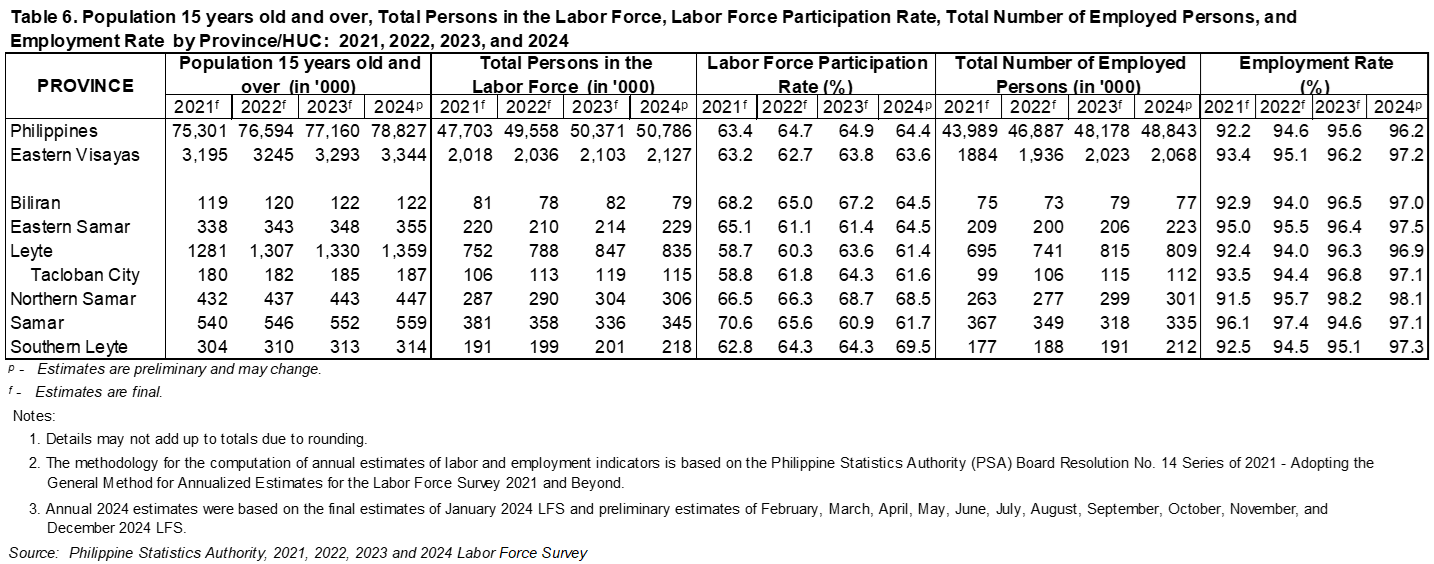
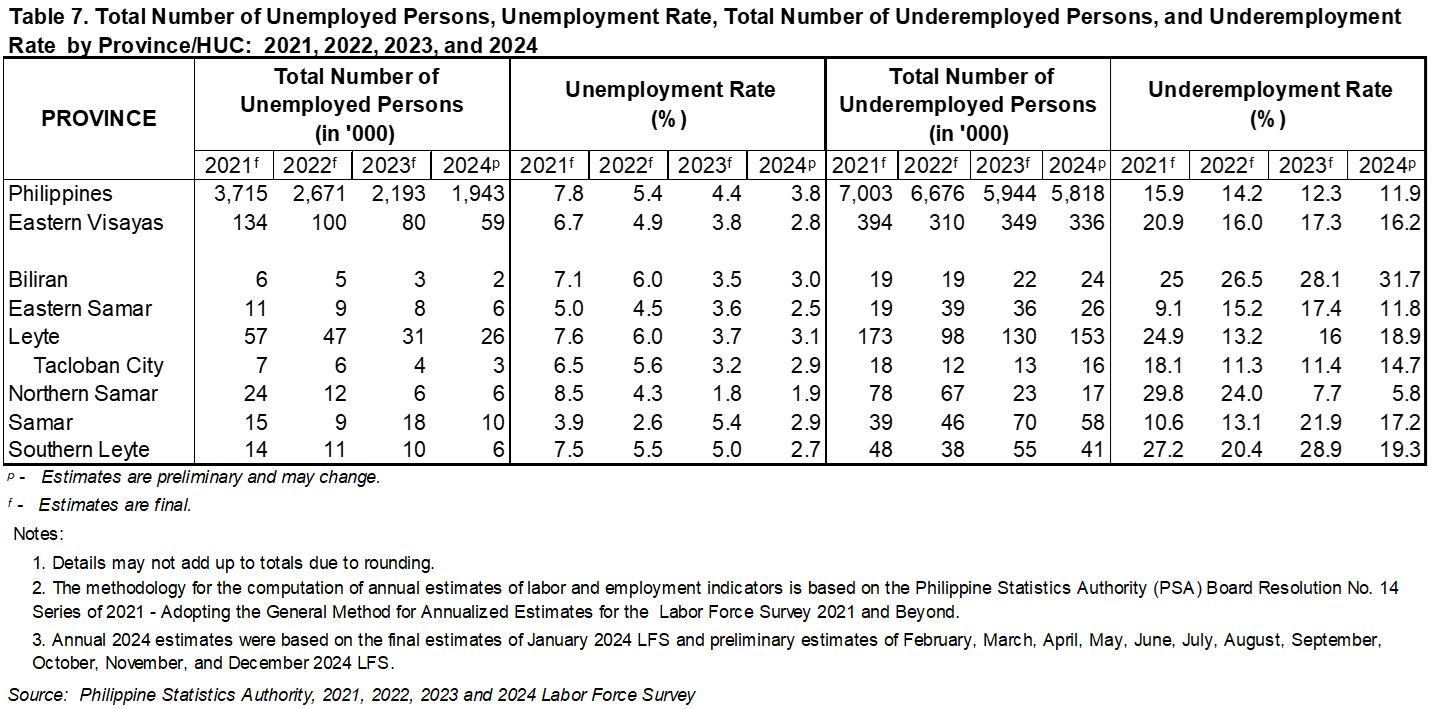
Technical Notes
Annual Labor Force Survey
The Labor Force Survey (LFS) is a nationwide survey of households conducted by the Philippine Statistics Authority (PSA) to gather data on the demographic and socio-economic characteristics of the population.
The LFS aims to provide a quantitative framework for the preparation of plans, and formulation of policies affecting the labor market. Specifically, the survey is designed to provide statistics on levels and trends of employment, unemployment, and underemployment for the country, as a whole, and for each of the administrative regions.
Originally, the LFS was being conducted on a quarterly basis, specifically in January, April, July, and October. Starting 2021, special rounds of LFS, known as monthly LFS were conducted in response to the need for high-frequency data to monitor the impacts of the COVID-19 pandemic on the Philippine labor market. These special LFS rounds are conducted in between the regular rounds of LFS, in February, March, May, June, August, September, November, and December.
With the addition of the monthly surveys in 2021, the increased frequency of data collection introduced new challenges in estimating the annual labor statistics. Therefore, the PSA adopted an official estimation methodology for annual LFS through PSA Board Resolution No. 14, Series of 2021, enabling the generation of labor and employment statistics at the national, regional, provincial and HUC levels.
The LFS uses the 2009 Philippine Standard Industrial Classification (PSIC), 2012 Philippine Standard Occupation Classification (PSOC) and the 2017 Philippine Standard Classification of Education (PSCED). A hybrid approach was used in data collection, a mixed mode of Computer Aided Personal Interviewing (CAPI) face-to-face interview, whenever possible, or a telephone interview. The reference period for this survey is the “past week” referring to the past seven days preceding the date of visit of the enumerator or the interviewer.
The Annual 2024 LFS, being a household survey, used the 2023 GeoMS frame and design in which the domain is region and province/HUC level. The 2023 GeoMS uses the results of the 2020 Census of Population and Housing (CPH). The EA Reference File (EARF) of the 2020 CPH is used as reference in constructing the Primary Sampling Units (PSU) frame, while the 2020 list of housing units for each of the PSUs is used as the SSU frame. The 2023 GeoMS covers all households in the Philippines, excluding institutional households.
Employment Status Concepts
1. “Population 15 Years Old and Over” refers to the number of population 15 years old and over excluding overseas workers.
2. “In the Labor Force” or “Economically Active Population” refers to persons 15 years old and over who are either employed or unemployed in accordance with the definitions described below:
3. Employed refers to persons 15 years old and over who during the reference period are reported either:
a. At work, i.e., those who do any work even for one hour during the reference period for pay or profit, or work without pay on the farm or business enterprise operated by a member of the same household related by blood, marriage, or adoption; or
b. With a job but not at work, i.e., those who have a job or business but are not at work because of temporary illness or injury, vacation, or other reasons. Likewise, persons who expect to report for work or to start operation of a farm or business enterprise within two weeks from the date of the enumerator’s visit are considered employed.
4. Underemployed refers to employed persons who express the desire to have additional hours of work in their present job, or an additional job, or a new job with longer working hours. Visibly underemployed persons are those who work for less than 40 hours during the reference period and want additional hours of work.
5. Unemployed persons include all those who, during the reference period, are 15 years old and over as of their last birthday, and reported as persons:
a. Without work, i.e., had no job or business during the reference period; and
b. Currently available for work, i.e., were available and willing to take up work in paid employment or self-employment during the reference period, and/or would be available and willing to take up work in paid employment or self-employment within two weeks after the interview date; and
c. Seeking work, i.e., had taken specific steps to look for a job or establish a business during the reference period; or
d. Not seeking work due to the following reasons: (1) tired or believed no work available, i.e., discouraged workers; (2) awaiting results of previous job application; (3) temporary illness or disability; (4) bad weather; and/or (5) waiting for rehire or job recall.
6. “Persons Not in the Labor Force” refers to persons 15 years old and over who are neither employed nor unemployed according to the definitions mentioned. Those not in the labor force are persons who are not looking for work because of reasons such as housekeeping, schooling and permanent disability. Examples are housewives, students, persons with disability, or retired persons.

